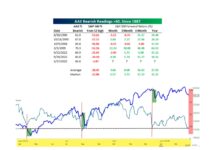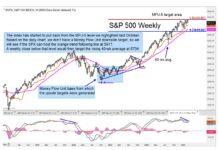 By Greg Naylor
By Greg Naylor
July was an eventful month, as the LIBOR* scandal made headlines, drought spread across America’s farmland, and Mario Draghi, the president of the European Central Bank, unexpectedly reversed course and announced unlimited defense of the Euro. By the numbers:
Stocks & Bonds
After a positive June for the U.S. stock market, July saw continued gradual growth. International stocks (MSCI EAFE) moved slightly higher, with plenty of volatility as good news and bad news continue to take turns sharing the headlines. The bull market continues for bonds, pushing yields even lower.
| S&P 500 Total Return | MSCI EAFE | BarclaysAggregateBond | Unadjusted CPI | |
| July | 1.39% | 1.07% | 1.38% | -.15% |
| June | 4.12% | 6.78% | .04% | -.12% |
| YTD | 11.00% | 1.14% | 3.78% | 1.43% |
| 2011 for reference | -2.11 | -14.22 | 7.84% | 3.38% |
Commodities & Currencies
The widespread drought in the U.S. pushed most food-related commodities higher, with corn futures gaining 26.86% and wheat gaining 17.30%. Approximately 1/3 of U.S. corn production is allocated by federal mandate to ethanol production, and there is already a push for the government to relax this requirement. However, high corn prices benefit farmers in politically-strategic Iowa and Illinois, so any change to the status quo seems unlikely in an election year. Crude oil gained 3.65% and closed at $88.06 per barrel.
The U.S. dollar index gained 1.17%, continuing to gain strength as a safe haven while the global economy sputters. So far this year the dollar has gained 2.96%.
Major news outlets missed some significant news out of China. After years of accusations that China manipulates its currency lower to help in exports, official government data showed that in the 2ndquarter of 2012 China had to intervene to strengthen the yuan. In that 3-month period, China spent $64 billion to prop up the yuan. This level of intervention is probably sustainable for several years as long as the Chinese trade deficit does not worse significantly, since China currently has $3.18 trillion of foreign currency reserves.
Economy
The economy continues its slow recovery. Next month the government will publish its GDP estimate for the second quarter of 2012, with economists expecting an annualized growth rate around 1.8%. The economy has started to add jobs at a slow rate. Normally this would push the unemployment rate lower. However, previously discouraged workers who have exhausted their savings are now re-entering the labor force, increasing the number of job seekers. So the official unemployment rate has remained unchanged at 8.2%.
The Producer Price Index (PPI), often seen as a leading indicator of price movement, increased just .1% in June. The Consumer Price Index (CPI) for all items was unchanged in June (excluding volatile food and energy, it increased .2%).
The housing market is showing signs of improvement. According to the National Association of Realtors (NAR), the annual rate of existing-home sales in June declined 5.4% from June of 2011. Distressed sales were 26% of overall sales. The national average 30-year mortgage was 3.59%, much lower than 4.32% at this point in 2011.
Summary
Individual Americans continue to struggle with underwater mortgages, reduced pay, high debt levels and bleak employment prospects. The story for corporate American could not be any different. American corporations continue to amass record amounts of cash. They also are able to match slight revenue declines with even larger cost-cutting, resulting in record levels of profits through a difficult economy.
You would think investors would be clamoring to buy shares of these profit machines. Alas, some things never change. Although the guiding principle in investing is to “buy low and sell high,” the majority of people invariably do the opposite. According to Ryan Detrick at Schaeffer’s Investment Research, individual investors have pulled almost $150 billion out of domestic equity funds and put almost $200 billion into bond funds in the last year.
In a difficult economy, personal financial success depends more than ever on planning and patience. Of course, life evolves, and if you have had any changes in your personal goals or investment comfort level, please don’t hesitate to call or email so that we can talk and make adjustments where necessary. At this time, we are not recommending any changes based on the numbers reported here.
*LIBOR is the London Inter-Bank Offering Rate. It has a similar function to the prime rate in the U.S., which is used as a barometer in setting interest rates on various types of loans (business, mortgage, credit card etc).
This material was prepared by Greg Naylor, and does not necessarily represent the views of Woodbury Financial or its affiliates. This information should not be construed as investment, tax or legal advice and may not be relied upon for the purpose of avoiding any Federal tax liability. This is not a solicitation or recommendation to purchase or sell any investment or insurance product or service, and should not be relied upon as such. The S&P500, MSCI EAFE and Barclays Aggregate Bond Index are indexes. It is not possible to invest directly in an index.
Investing involves risks and investors may incur a profit or a loss. Past performance is not an indication of future results.
Data Sources:
www.standardandpoors.com – S&P 500 information
www.msci.com – MSCI EAFE information
www.cmegroup.com – NYMEX crude prices
www.fxstreet.com – U.S. Dollar performance
www.bloomberg.com – Drought information
www.bea.gov – GDP numbers
www.bls.gov – CPI and PPI numbers
https://finance.yahoo.com/news/markets-turn-bearish-yuan-beijing-211826510.html – China data
About Greg Naylor: Greg is a partner and co-founder of Fiat Wealth Management, an independent financial advisory firm in Long Lake, Minnesota. He has been investing for over 7 years and enjoys sports, reading, singing, and spending time with family. Greg is a 2004 graduate of the University of Minnesota and lives in South Minneapolis with his wife Kat. Click here for more articles by Greg.
Twitter: @seeitmarket Facebook: See It Market








